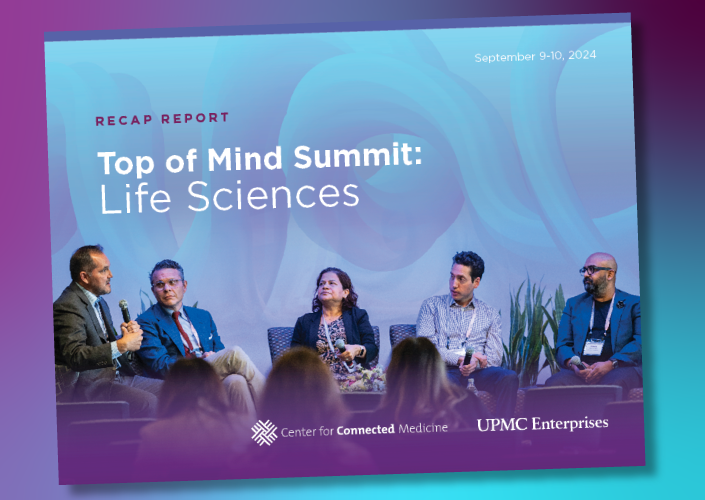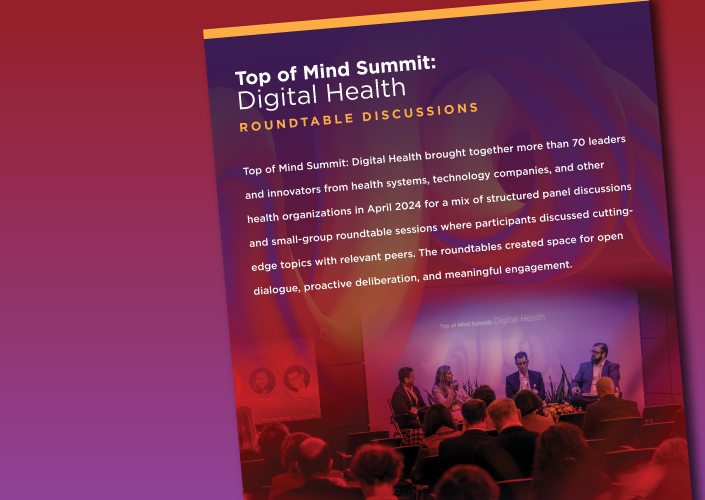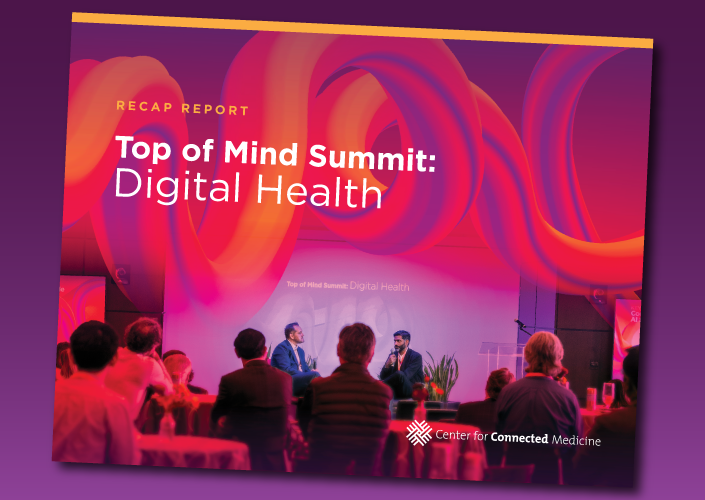Experts from UPMC, One Medical, and MD Anderson discuss the role of innovation for improving patient access to health care services
|
Improving patient access to medical services is more complex than simply reducing the wait time before a patient’s first appointment. There needs to be greater emphasis on access and support for patients throughout their care journey.
“There’s been so much fixation on that first appointment, when that’s just the beginning. Access is so much more than that first appointment,” Joon Lee, MD, Senior Vice President of UPMC and President of UPMC Physician Services, said during a Top of Mind Online panel discussion.
Dr. Lee moderated the panel, “Access Innovation: Meeting Patients Where They Are,” which explored how digital health technologies are boosting consumer experience, convenience, loyalty, and health outcomes at health systems, and where success is spurring additional focus.
The panel included expert insights from Rebecca Kaul, PhD, Chief Innovation Officer at MD Anderson Cancer Center, and Amir Dan Rubin, Chair, CEO, and President of One Medical.
The on-demand replay of their panel discussion, which was the third and final session in the Top of Mind Online program, is available now.
‘Access is king’
Dr. Lee opened the discussion by making three points about patient access to care. The first is that the ability to improve access will be a major factor in determining the success of health care organizations.
“Access is king,” Dr. Lee said. “Access is what’s going to separate out the winners and losers in health care in the ensuing few years.”
Second, the emergency department, physician office, and telephone are no longer the front doors to a traditional health care system. Patients are demanding a digital front door that is always open.
And third, the COVID-19 pandemic accelerated the need for health systems to define “patient access” for the future. “We need to think creatively and think hard about how we are defining access to health care,” Dr. Lee said.
Accessibility rather than access
Dr. Kaul started by offering her own definition of access, which she said she prefers to call “accessibility.”
“I don’t like the word access because people associate it with an administrative function, which involves just getting an appointment,” she said. “I think of access as accessibility because I don’t want to restrict it to just the first time you engage with us. Throughout the whole care journey patients need different kinds of access.”
Those “different kinds of access” can go beyond simply securing an appointment with a doctor. Accessibility involves meeting patient needs for physical care, emotional support, financial transparency, information about their disease and treatment, and engagement with a community.
“When I think about accessibility, I think about engaging with a patient and meeting all five of those needs and finding many ways to do it,” Dr. Kaul said.
Reducing friction to access
At One Medical, a private company that focuses on delivering primary care to patients through a membership model and technology, access is defined by reducing the friction that can make it difficult for patients to receive care, Mr. Rubin said.
The company, which offers care virtually and in-person, is focused on same- or next-day appointments, on-demand virtual care, and other amenities that make it easy for patients.
“This is an area — our own health — where we really don’t want to deal with it. We’ll take any excuse to not deal with it,” Mr. Rubin said. “All these things are around accessibility, reducing friction, reducing excuses to not engage.”
Get access to all Top of Mind Online sessions
Watch the entire “Access Innovation” discussion on demand. The panelists also discussed:
- How their organization’s approach to improving patient access is similar and different from a traditional health system’s.
- How they are working to overcome operational and change management challenges.
- What role technology companies can play in helping health care organizations improve access.
With a single registration you also will be able to access Session 1, a keynote fireside chat featuring Dr. Micky Tripathi, National Coordinator for Health Information Technology at HHS, and Dr. Rob Bart, Chief Medical Information Officer at UPMC.
And you’ll be able to watch Session 2, “Health Care Infrastructure: Fixing the Foundation,” featuring speakers from UPMC, Baylor Scott & White Health, Indiana University Health, and AT&T.
Top of Mind Online is a three-part virtual learning series focused on the topic of patient access, a key priority for health systems’ technology investments. The series explores patient access through in-depth virtual discussions among experts on infrastructure, innovation and investment in care delivery, and data and engagement.
The CCM defines patient access as the technologies — such as virtual care, remote patient monitoring, internet of things and devices, patient portals, apps, communication tools — that can help to reduce barriers for patients to access health care in a variety of settings, including a traditional health care facility, at home, online, and in-between scheduled encounters.
Patient access was cited by health system leaders as the top challenges that could be addressed by technology, according to the CCM’s “Top of Mind for Top Health Systems 2022” research.
More from the CCM’s Top of Mind program
Learn more about the full Top of Mind Online virtual learning series



